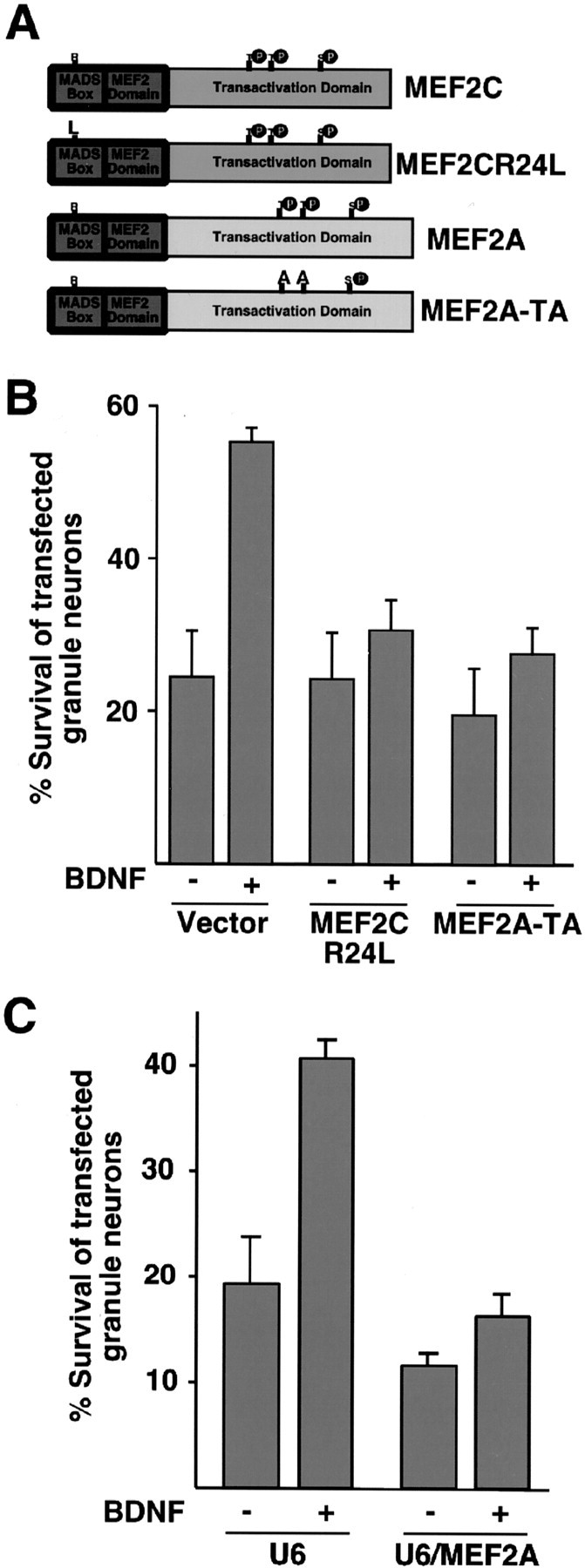Figure 3.

MEF2 mediates BDNF-induced survival of newly generated cerebellar granule neurons. A, Schematic representation of dominant-negative MEF2s. In MEF2CR24L, arginine 24 is substituted to lysine within the conserved DNA-binding domain. In MEF2A-TA, the key regulatory sites of phosphorylation threonines 312 and 319 are replaced by alanines. B, MEF2 mediates BDNF-induced granule neuron survival. Granule neurons were transfected with an expression plasmid encoding the dominant interfering forms of MEF2 (see Fig.3A) or the control vector together with the β-galactosidase expression plasmid. Transfected cultures were analyzed as in Figure 2 D. BDNF significantly increased survival of vector-transfected cerebellar granule neurons (ANOVA; p < 0.001; n = 3) but not of MEF2CR24L- or MEF2A-TA-expressing granule neurons. C, Knockdown of MEF2A inhibits BDNF-induced granule neuron survival. Granule neurons (P6 + 2DIV) were transfected with the U6 control vector or the U6/MEF2A plasmid encoding MEF2A hairpin RNAs, together with the β-galactosidase expression plasmid. After 2 d, cells were changed to medium without survival factors or were supplemented with BDNF (100 ng/ml). After 1 d, cells were fixed and subjected to immunofluorescence. Percentage of survival is shown as mean ± SEM. BDNF significantly increased survival of U6-transfected cerebellar granule neurons (ANOVA; p < 0.0005; n = 3) but not of MEF2A hpRNA-expressing transfected granule neurons. BDNF-induced survival was significantly reduced in MEF2A hpRNA-expressing neurons (percentage of survival, 16.3 ± 1.8; p < 0.01; ANOVA; n = 3) but not in Cdk2 hpRNA-expressing neurons (percentage of survival, 32.3 ± 4.7; n = 3) when compared with U6-transfected granule neurons (percentage of survival, 40.7 ± 1.5; n = 3).
